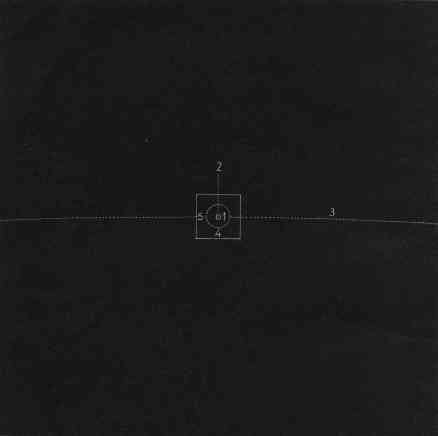| Cosmic View: The Universe in 40 Jumps by Kees Boeke (1957) |
page 16 |
|
| TOP Flaps 1 2 3 4 5 6 7 8 9 10 11 12 13 14 15 16 17 18 19 20 21 22 23 24 25 26 27 28 29 30 31 32 33 34 35 36 37 38 39 40 41 42 43 44 45 46 47 48 |
| Powers of ten: 1 2 3 4 5 6 7 8 9 10 11 12 13 14 15 16 17 18 19 20 21 22 23 24 25 26 27 <> 1 0 -1 -2 -3 -4 -5 -6 -7 -8 -9 -10 -11 -12 -13 |
 | |||
| 11. |
In the preceding drawing, the actual shape of the moon's orbit appears to be
practically a circle. As a matter of fact, it is not exactly a circle, but the difference
is so slight that it is only visible in the position of the earth, which is in
one focus of the ellipse, and therefore not in the center. There actually would be
a slight flattening of the circle, because we are perpendicular above the earth,
and therefore not straight above the plane of the moon's orbit, which itself
makes a small angle with the earth's. These factors have been taken into account
in composing the curve (6), i.e., the orbit as it would really appear to us
from above; but they are small even in #10 and in this drawing they are not
noticeable. It shows the earth (1), the moon (5), and its orbit (4); the earth's umbra
(2), and its orbit (3), which now can be seen to be very slightly curved.
| ||
|
This content is from Kees Boeke's book, Cosmic View: The Universe
in 40 Jumps. It has been placed online without permission. Copyright (C) 1957 by Kees Boeke. All rights reserved. No part of this book may be reprinted, or reproduced or utilized in any form or by any electronic, mechanical or other means, now known or hereafter invented, including photo-copying and recording, or in any information storage and retrieval system, without permission. |